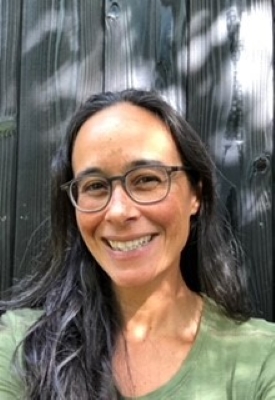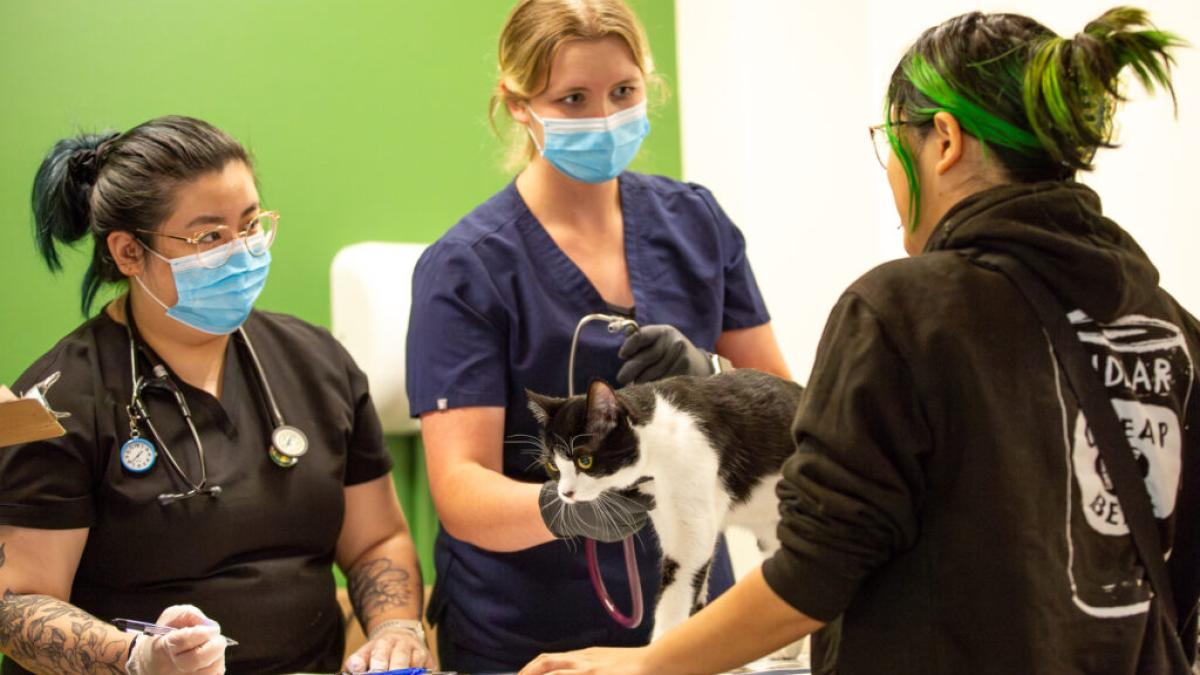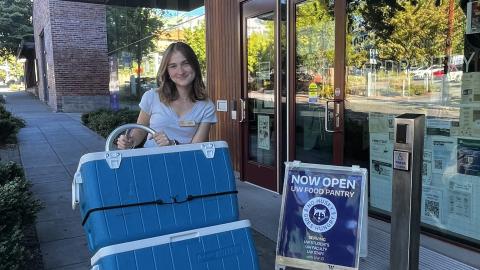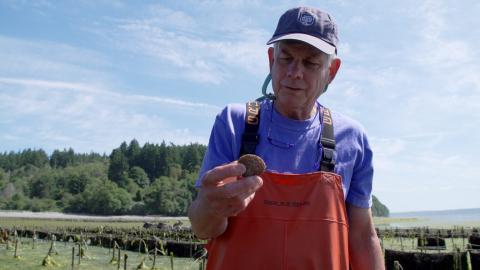
Every year, nearly 2 million young Americans experience homelessness. As many as a quarter of them own pets, which can be both a crucial source of emotional support and a barrier to receiving services such as housing or medical care. Studies have shown that unhoused people with pets may be less likely to visit medical facilities. Some may choose veterinary care for their animals over obtaining health care for themselves.
The Seattle One Health Clinic was designed to address those barriers. Led by the University of Washington’s Center for One Health Research operated in collaboration with the Washington State University College of Veterinary Medicine, and supported by two nonprofit organizations, the clinic offers free veterinary care alongside its medical services. A paper published July 31 in the Journal of Primary Care & Community Health found that the integrated approach increased access to preventative medical care for both people and their pets.
“It’s truly integrated — human and animal providers working together is a unique approach,” said Natalie Rejto, lead author of the paper and a postdoctoral researcher in the Center for One Health Research.
Building trust and preventing illness
.jpg)
At the One Health Clinic, a nurse practitioner and veterinarian, often accompanied by veterinary students, provide primary care services while UW students volunteer as patient navigators, helping to coordinate care and address shared health needs such as extreme weather, environmental contaminants and zoonotic disease. The clinic also helps clients document their pets as emotional support animals, which enables them to access a wider range of housing and other services.
“The data clearly shows that this model of care is building trust,” Rejto said. “It’s special to see holistic care that takes into account the environment, the animal, the person and their relationships in society, to provide care to these young people. It’s incredibly important for people to have preventative care, and that in turn has a great impact on public health.”
The study analyzed medical and veterinary records of clinic visits between 2019 and 2022. The majority of human participants were 23 years old or younger. Of the 88 human clients who visited the clinic during that period, 75 saw a health care provider at least once, and 40 patients established care for the first time in at least the past two years. Most of those patients returned for at least one follow-up appointment within two years of their first visit.

Most significantly, nearly 80% of all visits to the One Health Clinic resulted in clients receiving human health care. That includes 69% of visits where clients initially intended to seek care only for their pets.
Encouraging people to seek care
“Adding veterinary care to a primary care clinic creates a supportive environment that is vastly different from a typical medical care facility”, said co-author Dr. Peter Rabinowitz, one of the founders of the One Health Clinic and director of the UW Center for One Health Research, who is also a UW professor of environmental and occupational health sciences and an associate professor of medicine in the UW School of Medicine. “This unique atmosphere encourages clients to seek care for themselves as well as their animals.”
A fully integrated model may be a new concept to many, requiring novel partnerships between human health and veterinary professionals, Rejto acknowledged. But the results suggest that health care providers should give greater consideration to the health impact of the human animal bond between people and their pets.
“Potentially a good start would be to increase collaboration and communication between animal and human health care, to have human health facilities that are in communication with veterinary facilities. That could help identify diseases and shared environmental risks,” Rejto said. “It’s about expanding providers’ and human health care workers’ framework for addressing health.”

Other authors include Vickie Ramirez, senior research coordinator and center manager at the Center for One Health Research; Julianne Meisner, a UW assistant professor of global health and of epidemiology and deputy director of the Center for One Health Research; Hannah Fenelon, Michael Xie, Alice Tin and Erin Tabor of the UW Center for One Health Research; Katie Kuehl of the Washington State University College of Veterinary Medicine; Kate Schneier and Andrew Nee of Neighborcare Health; and Amanda Richer of Uplift Consulting.
This research was funded by the National Institutes of Health, National Institute of Nursing Research Training Program in Global Health Nursing at the UW, the New Tudor Foundation, and by a gift from the now-shuttered Y/YA Shelter “Peace for the Streets by Kids from the Streets.” Funding for the publication of this study was provided by the American Society for the Prevention of Cruelty to Animals’ (ASPCA) Open-Access Publishing Fund.
Adapted from the original post here.




